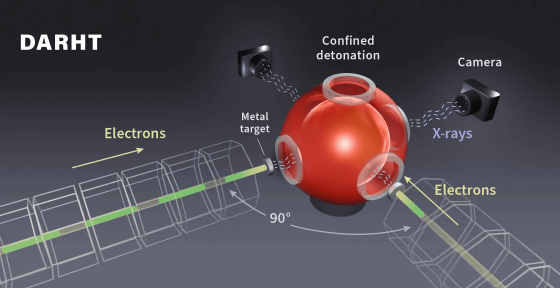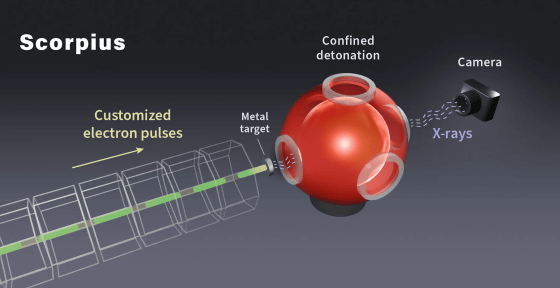Los Alamos National Laboratory explains how to capture ultrashort events of the nanosecond class at nuclear weapons development sites

The Los Alamos Laboratory, which was founded as part of the Manhattan Project to develop the atomic bomb and still conducts research related to nuclear weapons, explains how it can capture extremely short events of the nanosecond class.
The Dynamics of Dynamic Imaging | Los Alamos National Laboratory
While no nuclear tests involving nuclear explosions have been conducted at Los Alamos, the mission of nuclear stockpile management, including subcritical nuclear tests, is ongoing. A key component of these 'non-explosive nuclear tests' is the technology to capture nanosecond-scale events during subcritical nuclear tests. Los Alamos uses two imaging techniques, ' pRad ' and ' DARHT ,' and at the time of writing, preparations are underway for a new technique called ' Scorpius .'
pRad, also known as proton geography, uses protons from the particle accelerator at the Los Alamos Neutron Science Center (LANSCE) and seven high-speed cameras to take a series of photographs of an explosive event inside a containment chamber. The photographs can capture 20 to 40 images per event, providing important data such as the strength and compressibility of the material.

DARHT is a technique that uses a single pulsed electron beam to capture X-ray images from two directions. By capturing images from two directions at the same time, three-dimensional data can be obtained, enabling detailed analysis.

Scorpius is a planned accelerator project at

The Los Alamos Laboratory claims that by using the above photography techniques, it can maintain the safety and reliability of the U.S. nuclear stockpile without conducting nuclear explosion tests.
in Science, Posted by log1o_hf